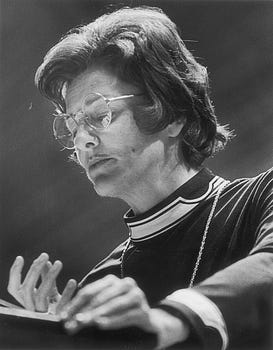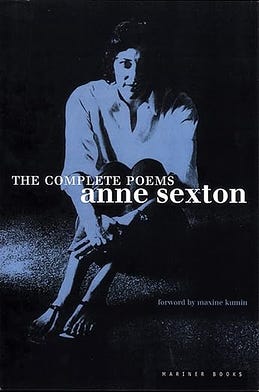|
 |
The Writer's Almanac from Thursday, November 9, 2017
“The Truth the Dead Know” by Anne Sexton from The Complete Poems. © Houghton Mifflin Company, 1981.
ORIGINAL TEXT AND AUDIO - 2017
It’s the birthday of the man that Smithsonian Magazine called “truly irreplaceable”: that’s astronomer Carl Sagan, born in Brooklyn (1934). Sagan was a popular guest on TV shows, especially The Tonight Show, but he was also a serious scientist who worked as a consultant on several unmanned NASA missions. Sagan was involved in the “Golden Record” project associated with the Voyager missions. The record was imprinted with images and recordings from Earth, in case it should be discovered by a form of intelligent life. It was on this project that Sagan met Ann Druyan. She was the creative director of the project, and eventually Sagan’s wife. Druyan later said: “Carl and I knew we were the beneficiaries of chance, that pure chance could be so kind that we could find one another in the vastness of space and the immensity of time. We knew that every moment should be cherished as the precious and unlikely coincidence that it was.”
Most people know him best as the co-creator and host of the hugely popular PBS show Cosmos, which aired in 1980. Sagan originally planned to call the show Man and the Cosmos, but he considered himself a feminist, so he decided to leave off the “man.” Seth MacFarlane, the creator of the animated TV series Family Guy and a lifelong astronomy enthusiast, collaborated with Ann Druyan, Sagan’s widow, to bring Cosmos back to television in 2014. MacFarlane also donated money to the Library of Congress, so that the library could purchase Sagan’s papers from Druyan. And there were a lot of papers: almost 800 boxes.
Sagan received a lot of fan mail over his career, many letters from people who shared their dreams and experiences, or their theories of extraterrestrial life, or simply thanked him for teaching them about astronomy. The more “out there” of the letters were filed in a box labeled “F/C,” which stood for “fissured ceramics” — Sagan’s code name for “crackpots.” People wrote to him about aliens that they had imprisoned in their basement, or the planets they had discovered. He was also approached by Timothy Leary, the former Harvard professor, and leader in the counterculture movement of the 1960s. Leary wanted to build a kind of “space ark” and transport hundreds of people to a different star, and he consulted Sagan to find out which star he should aim for. Sagan had to tell him that the technology to pull off such a feat did not currently exist. Leary wrote back: “I am not impressed with your conclusions in these areas,” and suggested that all that was needed was “exo-psychological and neuropolitical inspiration.”
Sagan died in 1996, of complications from a rare bone marrow disease. He was 62. He didn’t believe in life after death, and once told his daughter, Sasha, that it was dangerous to believe in something just because you want very badly for it to be true. But he also told her, “We are star stuff,” and made her feel the wonder of being alive.
From Sagan’s book Pale Blue Dot (1994), the title of which refers to a photo of Earth taken from billions of miles away: “That’s here. That’s home. That’s us. On it, everyone you love, everyone you know, everyone you have ever heard of, every human being who ever was, lived out their lives […] [E]very king and peasant, every young couple in love, every mother and father, hopeful child, inventor and explorer, every revered teacher of morals, every corrupt politician, every superstar, every supreme leader, every saint and sinner in the history of our species lived there — on a mote of dust suspended in a sunbeam.”
It’s the birthday of Pulitzer Prize-winning American poet Anne Sexton (1928). Sexton was best known for poems that explored mental illness, female sexuality, and death. She once wrote: “Live or die. Make up your mind. If you’re going to hang around don’t ruin everything. Don’t poison the world.”
Sexton grew up in Wellesley, Massachusetts, with an abusive, alcoholic father and a cold mother. Her great-aunt, whom she adored, went mad and died in a nursing home. Sexton suffered from mental illness, most likely what we now call bipolar disorder, and her education was shoddy at best. She once told her friend, poet Maxine Kumin, that the only thing she learned at boarding school was how to make a white sauce.
She tried modeling, and then married at 19 and had two children. She said: “All I wanted was a little piece of life, to be married, to have children. […] I was trying my damnedest to lead a conventional life, for that was how I was brought up, and it was what my husband wanted of me. But one can’t build little white picket fences to keep the nightmares out.”
Sexton started therapy, and her doctor suggested she try writing. She said: “I wrote my first poem in 1957 or 1958. I was watching television, a program on the form of the sonnet and I said, ‘I can do that.’ So I wrote a poem. It wasn’t very good and I didn’t offer it for publication.” She decided to enroll in poetry workshops, and ended up meeting Sylvia Plath. They became great friends and after class at Boston University, they would go for drinks at the Ritz Hotel. Sexton said, “We talked death with burned-up intensity, both of us drawn to it like moths to an electric bulb, sucking on it.”
Sexton was best friends with the poet Maxine Kumin. When they first met, Sexton called Kumin “the frump of the frumps” and Kumin dismissed Sexton as “a little flower child, the ex-fashion model […] totally chic.” They started attending poetry readings together and even came up with titles for each other’s poetry collections. They talked so often on the phone that they eventually had a second, secret line installed, so they wouldn’t invoke the ire of their husbands.
Her first book, To Bedlam and Partway Back (1960), was a sensation. Sexton wrote about menstruation, madness, and sexual politics at a time when women weren’t supposed to be writing about those things. Sometimes her raw honesty cost her friends. The poet Louis Simpson said, “‘Menstruation at Forty’ was the straw that broke this camel’s back,” referring to one of her more personal poems.
She became very popular during the 1960s, giving readings at college campuses and even starting her own rock band, Anne Sexton and Her Kind. But the toll on her mental health was great, and she had numerous breakdowns and suicide attempts. She said, “In the field I have chosen, to be halfway is to be nothing.”
Anne Sexton died by suicide in 1974. She wrapped herself in her mother’s old fur coat and climbed into her car and left it running.
Anne Sexton said: “Writers are such phonies: they sometimes have wise insights but they don’t live by them at all. That’s what writers are like … you think they know something, but usually they are just messes.”
And, “The beautiful feeling after writing a poem is on the whole better even than after sex, and that’s saying a lot.”
Anne Sexton’s books include All My Pretty Ones (1962), Live or Die (1966), and 45 Mercy Street (1969).
It’s the birthday of writer Ivan Turgenev, born in Oryol, Russia (1818). His parents were minor nobility, and he grew up on a huge estate with 5,000 serfs, presided over by his tyrannical mother. She forbid her serfs to marry, threatened them, and whipped them or sent them away if they made a small mistake like serving tea improperly. His parents’ marriage was unhappy, and his father consoled himself with other women and left the running of the estate to his wife. He died when his son was a teenager.
Turgenev went to the university and joined the civil service, but he was more interested in writing, so he dropped out. His mother was equally disgusted by his career path and his infatuation with a Spanish opera singer, Pauline Viardot, so she cut off his allowance, plunging him suddenly into poverty.
Turgenev loved hunting in the woods of his estate, and the book that made him famous was called A Sportsman’s Sketches or The Hunting Sketches (1852). It was a collection of stories in which the narrator travels around his estate, hunting — but instead of tales about hunting, the stories were about the serfs who lived there. The sketches exposed the abuse of serfs at the hands of landowners much like Turgenev’s own domineering mother. A Sportsman’s Sketches didn’t make Turgenev rich, but it made his name as a writer, and helped fuel the movement to abolish serfdom, which happened in 1861.
Be well, do good work, and keep in touch.®
If you’re interested in exploring more books by Anne Sexton, check out these selections on Amazon.
If you are a paid subscriber to The Writer's Almanac with Garrison Keillor, thank you! Your financial support is used to maintain these newsletters, websites, and archive. If you’re not yet a paid subscriber and would like to become one, support can be made through our garrisonkeillor.com store, by check to Prairie Home Productions, P.O. Box 2090, Minneapolis, MN 55402, or by clicking the SUBSCRIBE button. This financial support is not tax deductible.


